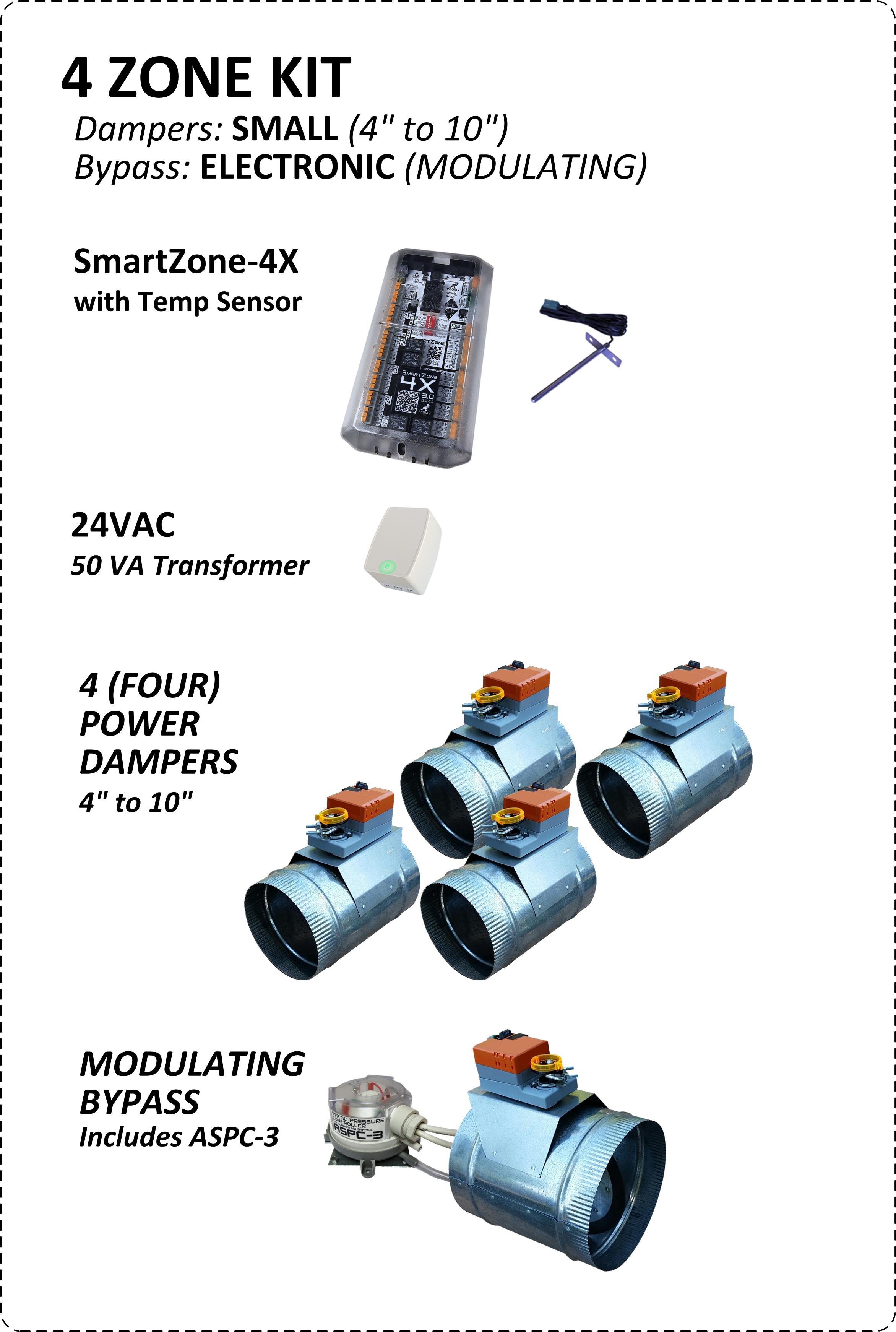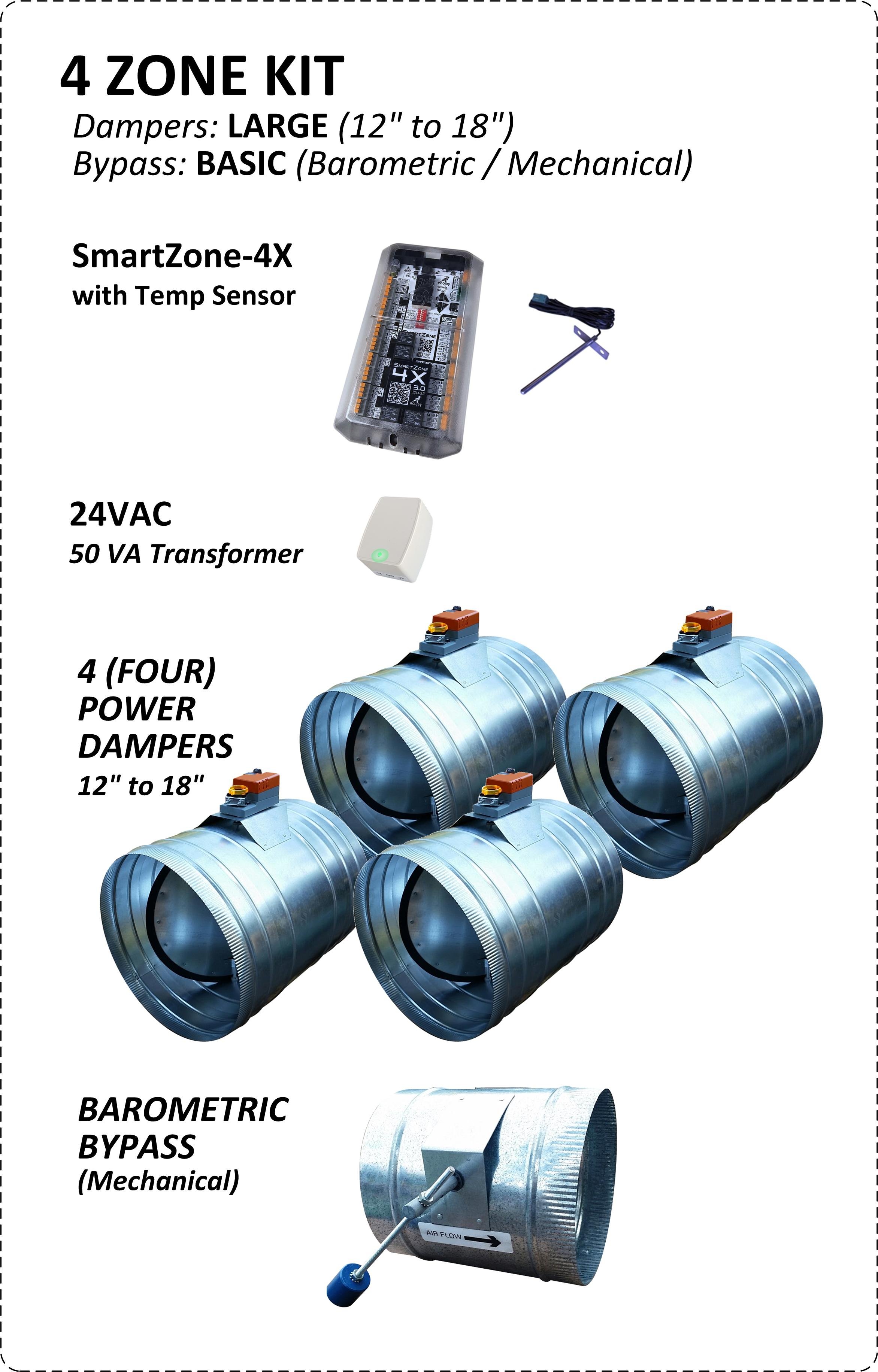Mini-splits have been all the rage for a couple of years now with companies like Mitsubishi leading the way and virtually everyone else jumping on the bandwagon by now. (LG, Fujitsu, Rheem just to name a few) Many contractors have adopted using mini-splits in homes that need zoning due to comfort issues (rooms that are too hot or too cold). Although this can be a great solution, there are many applications that “standard” forced-air zoning is preferable.
When to use mini-split:
When existing equipment is under-sized. If the HVAC equipment that is currently installed does not have the capacity to cool or heat the entire home it may be better to simply add a mini split just for the problem area. This, however, only gets you 2 zones… you may still want to add zoning to the existing equipment if more than 2 zones are required.
When no equipment is already in place and there is no room to run duct. This could be the case in an older home renovation or a finished basement/attic. However, the inside unit that goes on the wall of each zone can be considered unsightly to some and much higher cost can offset some desire to use the mini-split.
When the maximum efficiency is desired. With extremely high SEER ratings, if managed and installed properly (this includes optimum placement of the unit and the temperature-sensing remote), the mini-split can achieve lower energy use. However, if you have a central unit with a very high SEER rating, the same effect can be achieved with standard zoning.
When to use SmartZone ZONING:
When existing equipment is in good working order. If the HVAC equipment that is currently installed is correctly, adding SmartZone and & dampers
When more than 2 zones are desired… mini-splits get more complected and more expensive with more zones. And if you need more than 4 zones, it isn't recommended.
When “looks” are important. Indoor wall or ceiling units will never look as good as standard or architectural vents & air registers.
If cost is a factor, standard SmartZone zoning will almost always win.
CONS of ductless mini-split:
Unsightly - it doesn’t matter how pretty the indoor unit is, it’s still a large box with a blower and cooling coil on your wall or ceiling. There is no way it can look as good as just a thermostat on the wall and standard vents.
More expensive to install and replace parts. With multiple indoor units that all have redundant parts to possibly break... on the other hand 5 year warranty for all SmartZone parts.
Extensive electrician wiring if multiple indoor/outdoor units needed. Often new dedicated breakers are required and 120/240 wiring to both indoor/outdoor units can mean sheet-rock, siding, etc damage too.
Proprietary thermostats and controls… say goodbye to your NEST or other favorite thermostat and exchange it for a glorified TV remote that comes with the unit. Also, careful where you set the remote because it can have a drastic effect on run-time and therefore energy use. This may be the most objectionable drawback to ductless mini-split systems.
Even though mini-splits have grown in popularity for their efficiency and, in some cases, ability to solve temperature issues… they really are nothing more than an upgraded window-unit. Standard zoning is still the most prevalent type of zoning even if it doesn’t get as much press. HVAC zoning has been around for decades and has been perfected over that time. SmartZone is a perfect example of that evolution zoning coming to an apex. It is jam-packed with sophisticated features but as simple to install and set-up as any thermostat. No-doubt mini-split systems will continue to evolve and improve over the years but for now, your best bet is to use standard central HVAC zoning.








